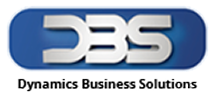Dynamics 365 Finance Operations brings remarkable returns for large enterprises. Studies reveal that organizations implementing this solution see benefits worth $466,000 over three years. This powerful platform goes beyond financial management and changes how businesses handle their most precious resource: people.
Companies that use Dynamics 365 Finance and Operations modules have reduced their IT maintenance costs by 35%. This translates to yearly savings of about $50,000. Microsoft Dynamics 365 Human Resource provides detailed tools that streamline HR operations, boost employee experience, and maintain compliance. The platform’s benefits extend past cost savings to better talent acquisition, automated routine processes, and valuable data through advanced analytics.
Let’s explore how Dynamo HR works together with Dynamics 365 Finance to improve efficiency throughout your organization. These cloud-based applications can revolutionize operations by automating payroll processing and ensuring global compliance. Your team can redirect saved time and effort to critical business priorities that matter most.
Automating Core HR Functions with Dynamo HR
Dynamo HR turns administrative staff into strategic knowledge workers. The software automates repetitive HR processes and works smoothly with Dynamics 365 Finance Operations. This modular solution helps the HR department take a vital role in driving success. Teams can now focus on activities that add more value instead of routine administrative tasks.
Payroll processing automation with Dynamics 365 Finance
Dynamo Payroll works right inside Dynamics 365 Finance and Operations. The unified platform removes the need to enter data twice between systems. Your enterprise benefits from native integration that posts detailed entries to the General Ledger. The system handles multiple payroll cycles for different employee groups, making it perfect for complex enterprises.
The Employee Master Index acts as a central hub to manage personnel information. It stores records of employee transactions and provides a complete database with historical tracking. Your finance and HR teams can pull up accurate employee information whenever they need it.
The system comes with flexible formula editors that support many earnings and deductions setups. Companies can tailor payroll calculations to their needs while staying compliant with tax rules. The software takes care of complex pension setups, gratuity math, and benefit programs without manual work.
Getting started is quick – Dynamo can be up and running in under eight weeks. This fast setup means minimal disruption to your business while you start seeing automation benefits right away.
Leave and attendance tracking with minimal manual input
Dynamo HR’s leave management lets teams handle time off completely online. The system calculates annual leave automatically and processes leave encashment that used to need lots of manual work. Approval workflows for leave requests, courses, and payments now move faster than before.
Time and attendance tracking works just as smoothly. The system captures attendance data and sends it straight to payroll, which removes error-prone manual entry that often troubles large companies. Managers can now:
- Keep an eye on hours worked and overtime to control labor costs
- See employee attendance patterns as they happen
- Check schedules to keep staffing levels right
- Monitor timecard status to avoid payroll delays
Employees see their attendance records clearly and can view their monthly attendance reports. This self-service option reduces HR staff’s workload and makes employees happier.
The system’s time and attendance features calculate total working hours on their own. It shows relevant remarks for each employee’s daily activities. Users can search attendance data by name, date, break time, working hours, and check-in/check-out locations to get a clear picture of workforce activities.
Large enterprises using Dynamics 365 Finance Operations can cut down on administrative work. They get more accurate data and can put their people to work on strategic projects instead of pushing paper.
Reducing Administrative Overhead through Integration
Dynamo HR’s integration with Dynamics 365 Finance Operations reshapes how big companies handle their workforce data. Dynamo works right inside the Dynamics 365 environment. This creates a unified system that cuts down on duplicate data entry and paperwork, unlike standalone HR systems.
Two-way sync with Dynamics 365 Human Resource module
The dual-write infrastructure in Dynamics 365 lets HR and finance systems share data both ways. This feature connects Finance and Operations apps with Customer Engagement apps almost instantly. The data stays consistent everywhere. Changes in one system show up right away in the other. Users don’t have to update multiple platforms manually.
The Human Resources to Finance template in Data Integrator smoothly moves data for key HR parts:
- Jobs and positions maintenance
- Worker information and addresses
- Employment records and position assignments
The standard template moves data from Human Resources into Finance. Dynamo’s integration takes this further with two-way data sharing. This approach turns HR from just an admin function into a strategic powerhouse that works hand in hand with other ERP modules.
The system uses unique prefixes or number sequences to stop ID duplicates during syncing. This smart design keeps data clean throughout the whole process.
Unified data access across HR, finance, and operations
Dynamo HR puts all employee data in one place. This ends the problem of scattered information in big companies. Everything about employees—from pay and benefits to performance and attendance—syncs up in a central spot. Every department can now see the same workforce data.
Getting rid of multiple separate systems brings big benefits:
- Decision-makers see exactly where workforce money goes because payroll data connects straight to departments, jobs, business units, and project accounts
- Payroll calculations update automatically with changes in employee records, time-off, and job status
- Financial processes and HR functions share data directly, which cuts down mistakes and duplicate entries
Dynamo’s connection to Dynamics 365 speeds up automation across the organization. HR links to operational systems make staffing respond better to changing needs. Teams fill roles faster for production lines, logistics networks, or project teams.
This unified approach makes reporting much better. The combined data shows up as charts, graphs, or tables. Users spot payroll or HR issues more easily. These insights lead to smarter decisions that boost overall performance.
Dynamo runs inside Microsoft Dynamics 365 Finance and Operations. Companies can use it on-site or in the cloud. This flexibility lets them set up the system that fits their IT setup while getting all the perks of unified data access.
Boosting Financial Visibility with HR-Linked Reporting
Enterprises with complex workforce structures struggle with financial visibility. Labor costs top the expense list on balance sheets, especially in project-based industries. Dynamo HR on Dynamics 365 Finance Operations solves this by connecting HR data seamlessly with financial reporting systems.
Payroll cost breakdown in general ledger
Dynamo HR and Dynamics 365 Finance Operations work together to create automated journal entries. These entries capture detailed payroll data right in the general ledger. The automation removes double data entry and keeps data accurate without version conflicts. The system posts all transactions to the Business Central general ledger once payroll processing finishes.
The power of this integration lies in its detail retention. Financial managers can see more than just a combined payroll expense. They can analyze:
- Department-specific labor costs
- Project-associated payroll expenses
- Position-based compensation analysis
- Full employee burden costs by job or task
Dynamo HR creates a two-way integration that syncs payroll and project journals to analyze job costs in detail. Companies can track labor expenses against quoted job prices, even with thousands of ledger lines needing analysis.
Of course, this integration offers more than just organizing data. The unified system shares data instantly and connects project data, payroll, and financial information into one system. Companies now see their labor cost structures clearly without juggling multiple systems.
Live dashboards for labor cost forecasting
The integration with Dynamics 365 Finance Operations creates excellent data visualization through Microsoft PowerBI, SSRS, and Tableau. These tools turn complex workforce data into applicable information through custom dashboards and reports.
Interactive dashboards show key metrics instantly – payroll costs, headcount changes, and overtime patterns. Managers can make smart decisions and react quickly to unusual patterns. This matters most in project-based businesses where labor costs change often, helping them optimize their resources better.
The live analytics features do more than basic reporting:
- Teams can analyze labor costs in departments, locations, or projects
- Overtime patterns help optimize staffing
- Headcount differences from plans show budget issues early
- Predictive analytics forecast future labor costs
Big companies have seen huge benefits from these features. To name just one example, Walmart uses analytics to optimize payroll for over 2.3 million employees worldwide. They study time and attendance data to find patterns in overtime and scheduling.
Experts call the mix of centralized payroll data and strong analytics tools a “crystal ball for business performance”. Leaders track employee salary expenses and benefits while spotting spending patterns across departments and roles. Companies using Dynamics 365 Finance Operations get both historical reports and future insights that help plan their workforce strategically.
The integration ended up transforming financial visibility by breaking down walls between HR and finance. Companies now see labor costs clearly, which leads to better budgeting, accurate forecasts, and smarter resource use across the organization.
Ensuring Global Compliance and Audit Readiness
Multinational enterprises deal with complex regulatory challenges in their global operations. Dynamics 365 Finance Operations with Dynamo HR has reliable compliance features. These features reduce legal risks and make reporting processes smoother.
Built-in tax rules and country-specific reporting
Dynamics 365 Finance Operations has features customized for each country’s requirements through localization. The system adds tax codes specific to each legal entity’s country automatically. This will give a compliant framework for all transactions with local tax laws. Different countries need their data stored according to unique regulations, making this adaptability vital.
The Electronic Reporting (ER) tool lets users configure electronic documents that line up with legal requirements in countries of all sizes. Organizations can meet country-specific reporting needs and lower the risks of international operations.
Dynamics 365 Finance Operations provides extensive features to configure country-specific tax laws, rates, and calculations. This detailed system will give a proper tax compliance framework and reduces fines or penalties. Users can customize the platform’s regulatory reporting features to match local standards, which makes compliance easier.
Automated generation of W-2 and other statutory forms
The system delivers complete reporting capabilities for W-2 processing with 940 and 941 reporting. Standard payroll reports are a great way to get help with payroll processing and government reporting. Businesses can create pay statements and W-2 forms for workers directly.
The system generates W-2 forms that follow IRS regulations completely. It stays current with the latest tax laws to meet strict compliance standards. Electronic W-2 copies help the environment and improve storage options.
The system handles detailed earnings statements beyond W-2 forms. These cover federal, state, and local taxes plus flexible deduction and benefits processing. Support for garnishments and tax levies helps calculate and report all mandatory deductions correctly.
This automated statutory reporting approach cuts manual work significantly. It reduces compliance risks and keeps the enterprise ready for audits across global operations.
Scalability and Customization for Enterprise Growth
Business expansion requires IT systems that grow with the company. Dynamo HR’s architecture provides this flexibility and enables organizations to scale their operations without replacing their existing technology investments.
Modular architecture for phased implementation
The modular design of Dynamo HR lets large enterprises implement only the features they need while keeping room to expand. This approach offers three main advantages:
- Cost-effectiveness: Avoid upfront investment in unnecessary features
- Implementation speed: Be operational in less than eight weeks
- Flexibility: Customize modules to fit current workflows without disrupting future growth plans
The modular structure breaks complex HR processes into smaller, independent, and interchangeable parts that work as building blocks. Organizations can start with core modules like financial management and add others as their business needs evolve.
Power Platform integration makes it easy to customize and extend Dynamo HR, whatever your technical expertise. Companies can adapt the system to their unique HR workflows without extensive coding or development resources.
Support for multi-company and multi-currency setups
Companies that operate across multiple legal entities face unique challenges in HR and finance management. Dynamo HR solves these challenges by supporting multi-company configurations within Dynamics 365 Finance Operations.
The platform lets businesses map out their intercompany relationships early to ensure proper configuration across entities. Unlike traditional approaches that require switching between legal entities, Dynamo HR optimizes operations by processing financial transactions across multiple companies simultaneously.
Global enterprises benefit from Dynamo HR’s multi-currency transaction support that eliminates manual currency conversion. The system handles everything automatically:
- Applies correct exchange rates based on transaction date
- Calculates and posts realized gain/loss on multi-currency transactions
- Supports month-end monetary balances across receivables, payables, and general ledger
The multi-currency features remove barriers created by currency differences and make it easier for enterprises to expand globally. Companies can deploy the platform on-premise or in the cloud to line up with their existing IT infrastructure.
Conclusion
Dynamo HR’s integration with Dynamics 365 Finance Operations reshapes the way large enterprises manage their most valuable assets—their people. This piece explores how this powerful combination improves organizations of all sizes.
The automation capabilities reduce manual workload by a lot. The core team no longer wastes precious hours on repetitive tasks and becomes strategic contributors to organizational success. HR and finance systems blend together to eliminate data silos and create a unified ecosystem where information flows freely and accurately.
Financial teams reap equal benefits from this integration. Detailed payroll breakdowns in the general ledger provide clear visibility into labor costs. Up-to-the-minute data analysis through live dashboards enables monitoring and forecasting that gives decision-makers the ability to act on insights. Walmart has showed how analyzing workforce data patterns can optimize operations at massive scale.
Global enterprises face unique challenges with compliance and its coverage. The built-in country-specific tax rules and automated statutory form generation ensure companies meet legal requirements without excessive manual effort. Risk reduction and audit readiness remain constant across all operations through this automation.
The modular architecture stands out as a key feature. Large organizations can implement their immediate needs and scale as requirements evolve. Multi-company and multi-currency support removes barriers to global expansion that allows businesses to operate naturally across geographical boundaries.
Dynamo HR on Dynamics 365 Finance will without doubt continue to evolve and meet enterprise needs. The current capabilities deliver substantial ROI through cost savings, time efficiency, and strategic workforce management. Organizations should think about how this powerful combination could reshape their operations and position them for sustained growth in an increasingly competitive world.
Dynamics Business Solutions (DBS) is certified Microsoft Dynamics partner in UAE, we take pride in our ability to develop and deploy the right business solution that matches global client’s requirements. DBS has developed in-house state of the art solutions for HR and Payroll, Dynamo and DynaPay on top of Microsoft Dynamics 365 FO and Business Central respectively. These solutions are catering the all business needs of HR and Payroll departments. We provide best services and support to our clients.
To know more, speak to our expert at Dubai: +971 4 447 5525 Jeddah: +966 508162072 or inbox us your query at info@dynamics.ae OR visit www.dynamics.ae
FAQs
Q1. What are the key benefits of using Dynamo HR with Dynamics 365 Finance for large enterprises?
Dynamo HR integrated with Dynamics 365 Finance automates core HR functions, reduces administrative overhead, boosts financial visibility, ensures global compliance, and offers scalability for enterprise growth. It streamlines payroll processing, leave management, and provides real-time analytics for better decision-making.
Q2. How does Dynamo HR improve payroll processing in Dynamics 365 Finance?
Dynamo HR runs directly inside Dynamics 365 Finance, creating a unified platform that eliminates data re-entry. It supports multiple payroll cycles, flexible formula setups, and automatic posting to the General Ledger. This integration ensures financial data consistency and enables detailed cost breakdowns across departments and projects.
Q3. Can Dynamo HR handle global compliance requirements?
Yes, Dynamo HR with Dynamics 365 Finance includes built-in tax rules and country-specific reporting features. It automatically incorporates local tax codes, supports electronic reporting for various countries, and automates the generation of statutory forms like W-2s. This comprehensive approach ensures proper tax compliance and reduces the risk of penalties.
Q4. How does Dynamo HR enhance financial visibility for enterprises?
Dynamo HR creates seamless connections between HR data and financial reporting systems. It enables detailed payroll cost breakdowns in the general ledger and provides live dashboards for labor cost forecasting. This integration allows for real-time analytics on key metrics like payroll costs, headcount fluctuations, and overtime trends, supporting strategic workforce planning.
Q5. Is Dynamo HR scalable for growing enterprises?
Absolutely. Dynamo HR features a modular architecture that allows for phased implementation. Enterprises can start with core modules and add more as needed. It also supports multi-company and multi-currency setups, making it ideal for businesses expanding globally. The system can be customized using Power Platform integration, adapting to unique HR workflows without extensive coding.




